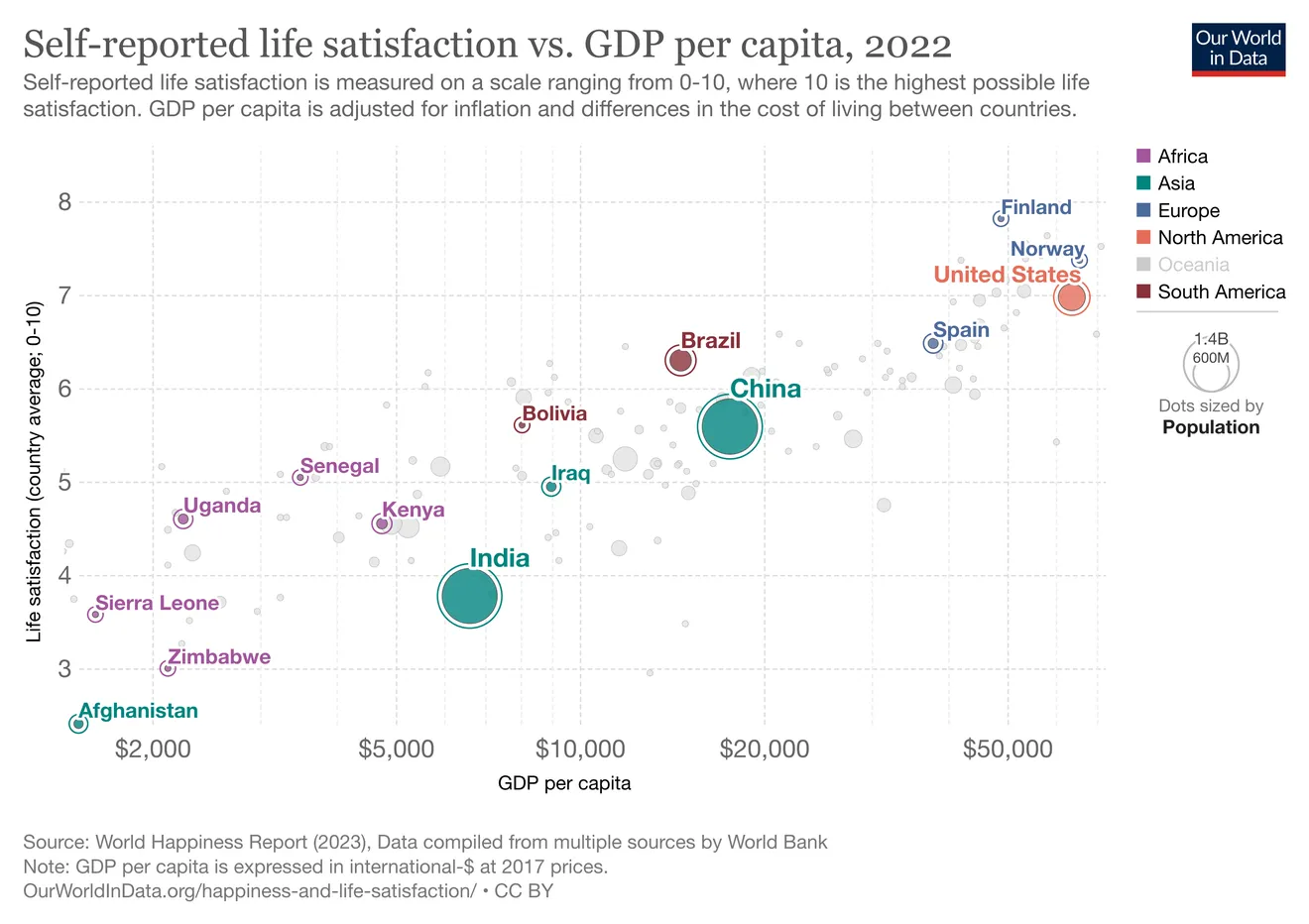Happiness vs GDP
Making the world a happier, fairer, safer place seems like an idea that most people can get behind. But how do you do it? Although there’s a relationship between average self-reported happiness of a population and increased GDP per capita, there are notable outliers.
So, what to do? Focus on other numbers as well. This article talks about measuring ‘Wellbys’ or ‘well-being-life-adjusted-years’ which involves placing a lot more emphasis on subjective numbers.
The trouble, as anyone who has visited a hospital in England will know, is that self-reported data while useful can be very problematic. For example, when I go into hospital, I know that they will ask me to rate my pain on a scale of 1-10. Being a reasonably stoic kind of person, I used to keep that number low, which not only kept me at the back of the line for being seen, but meant they were less likely to give me painkillers.
Guess what I’ve learned to do? Yep, game the system. People respond to incentives, so although trying to make single numbers go up and to the right might make life easier for those intervening in systems, it doesn’t make those interventions any more effective.
Instead, I’d like to see the focus more on something like the Human Development Index (HDI) which, not only has been around for a while, but is a composite of statistics designed to increase human flourishing.

As we’ve gathered more data on the happiness of different populations, it’s become clear that increasing wealth and health do not always go hand in hand with increasing happiness. By the economists’ objective measures, people in rich countries like the US should be doing great — and yet Americans are only becoming more miserable. And people in some higher-GDP European countries like Portugal and Italy report lower life satisfaction than people in lower-GDP Latin American countries.Source: Make people happier — not just wealthier and healthier | VoxWhat’s going on here? How do we explain the gaps in life satisfaction that objective metrics like GDP don’t explain?
Nowadays, a growing chorus of experts argues that helping people is ultimately about making them happier — not just wealthier or healthier — and the best way to find out how happy people are is to just ask them directly. This camp says we should focus a lot more on subjective well-being: how happy people are, or how satisfied they are with their lives, based on what they say matters most to them — not just based on objective metrics like GDP. Subjective well-being can tell us things that objective metrics can’t.
[…]
Instead, [Michael} Plant [who leads the Happier Lives Institute] argues we should compare how much good different things do in a single “currency” — specifically, how many well-being-adjusted life years, or Wellbys, they produce. Producing one Wellby means increasing life satisfaction by one point (on the 0-10 life satisfaction scale) for one year. It’s a metric that some economists, including those behind the World Happiness Report, are coming to embrace. If we were to evaluate every policy in terms of how many Wellbys it produces, that would allow for direct apples-to-apples comparisons.
“I’m pretty bullish about just using well-being as the [single] measure,” Plant told me.